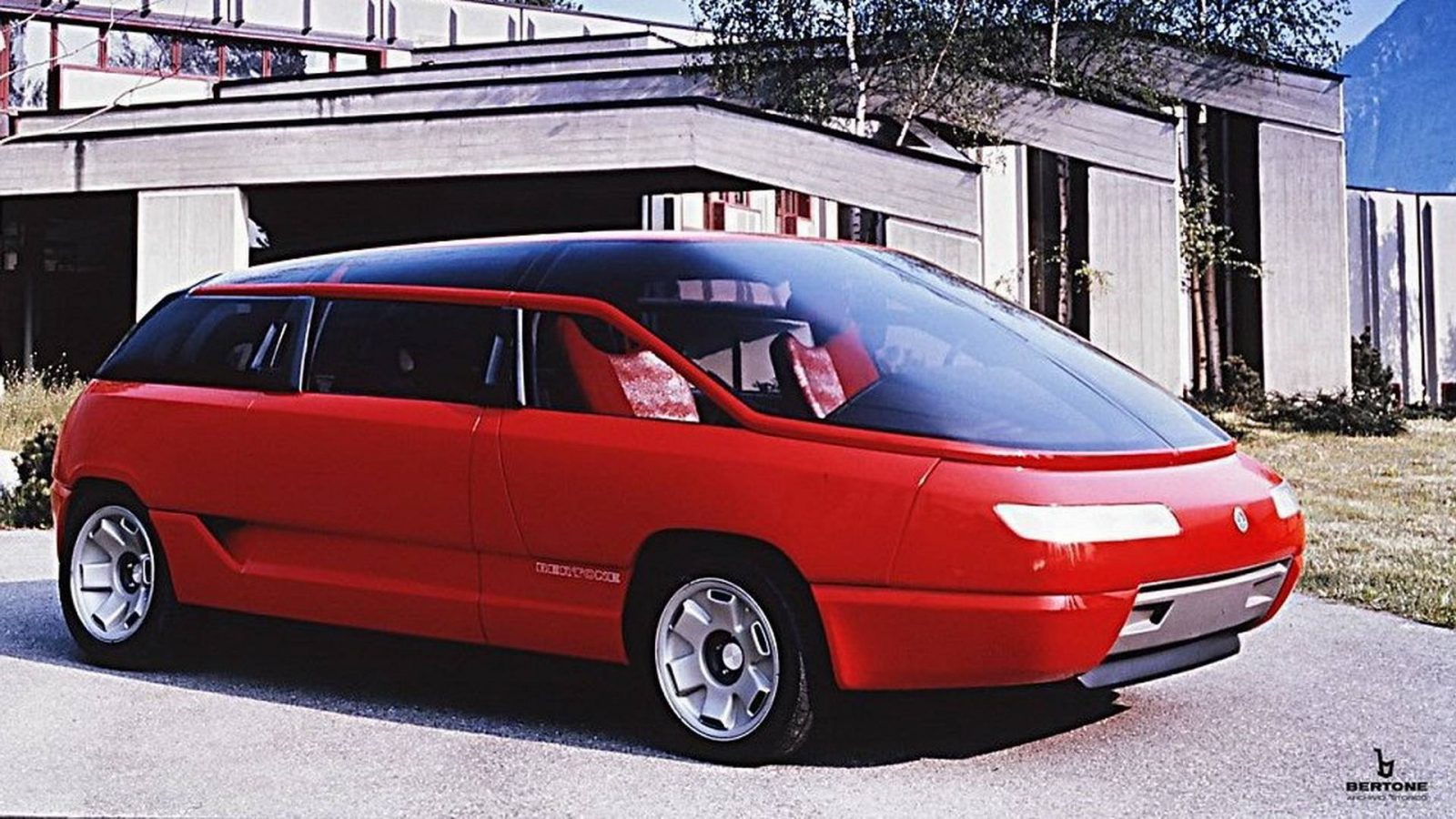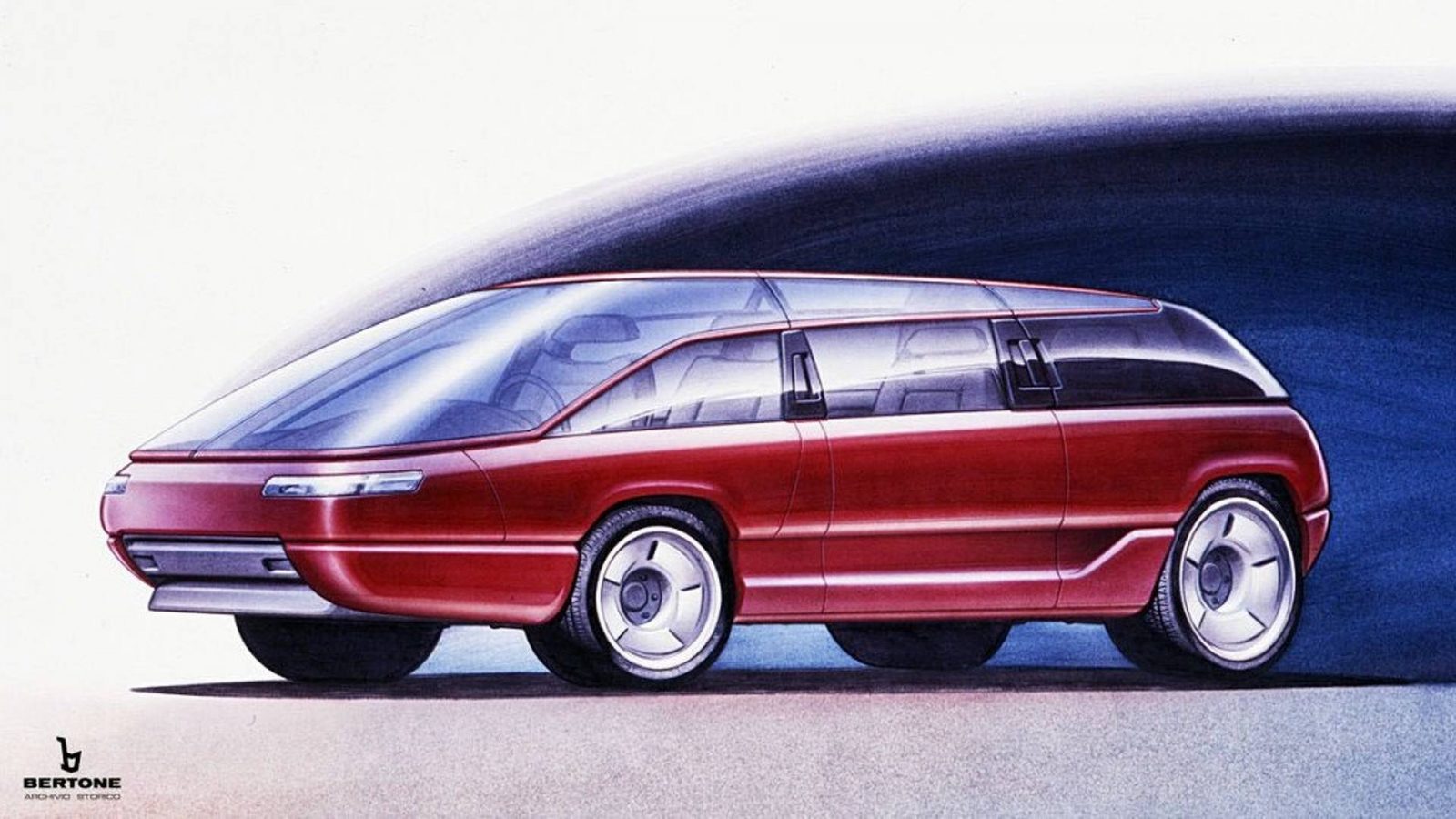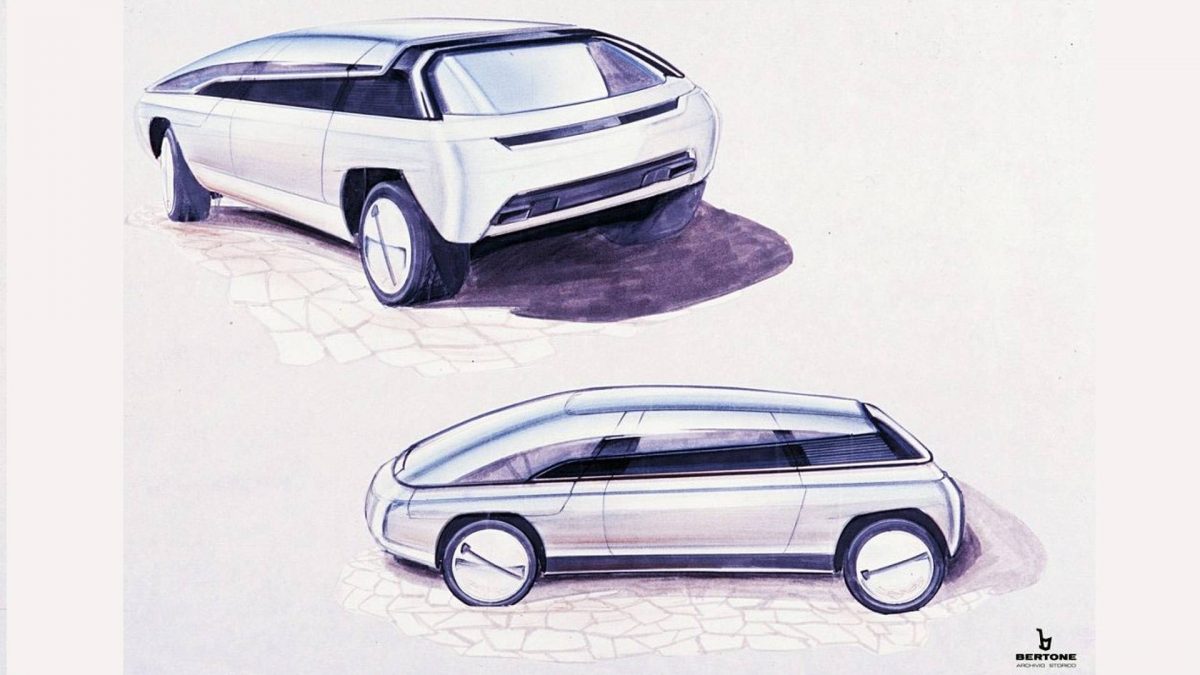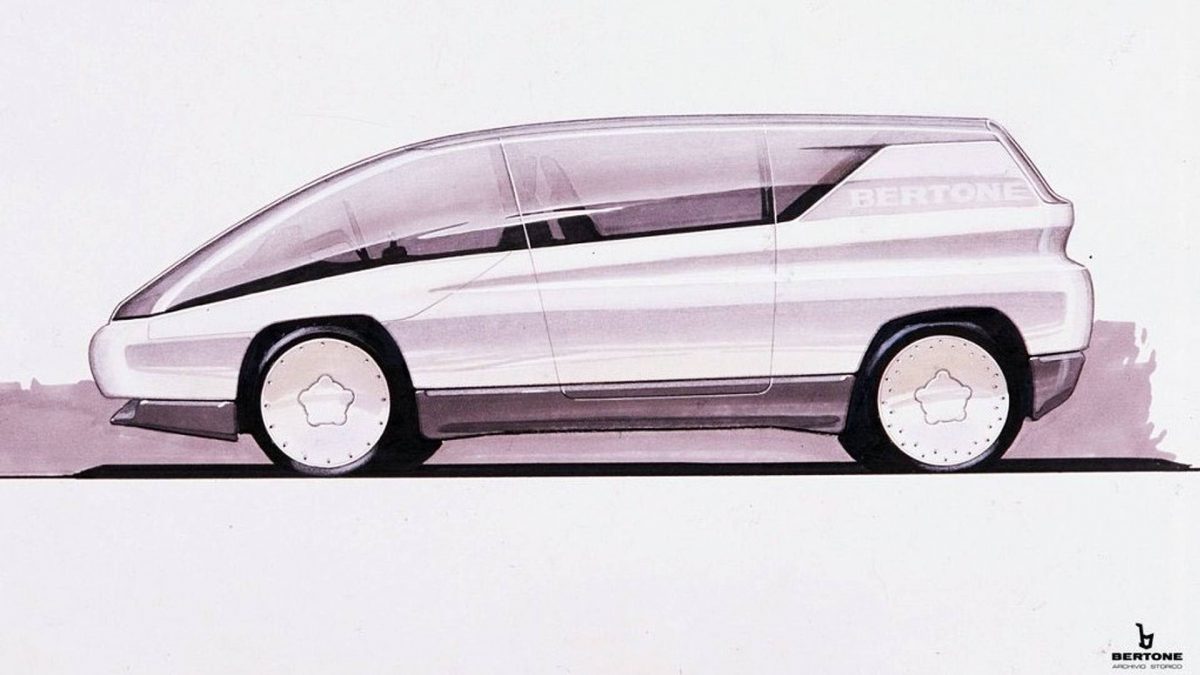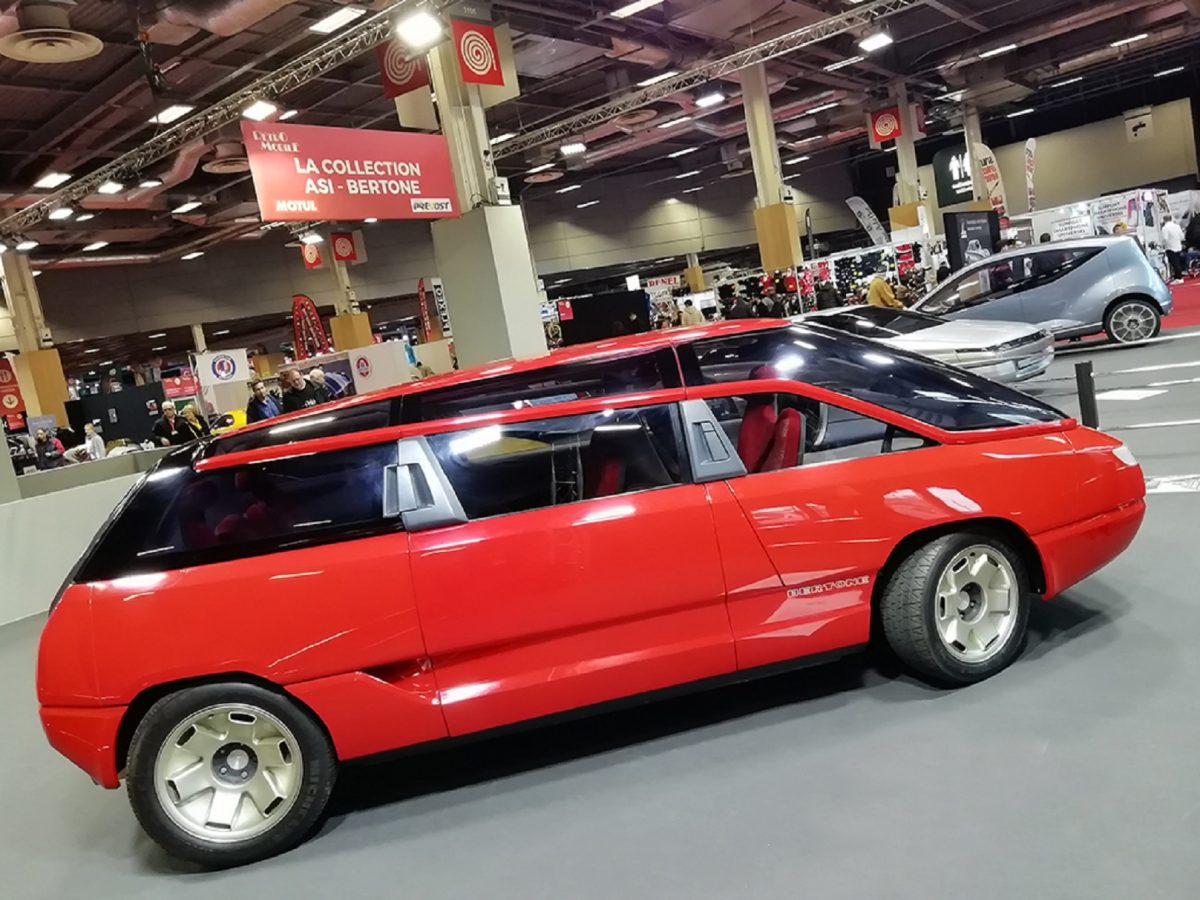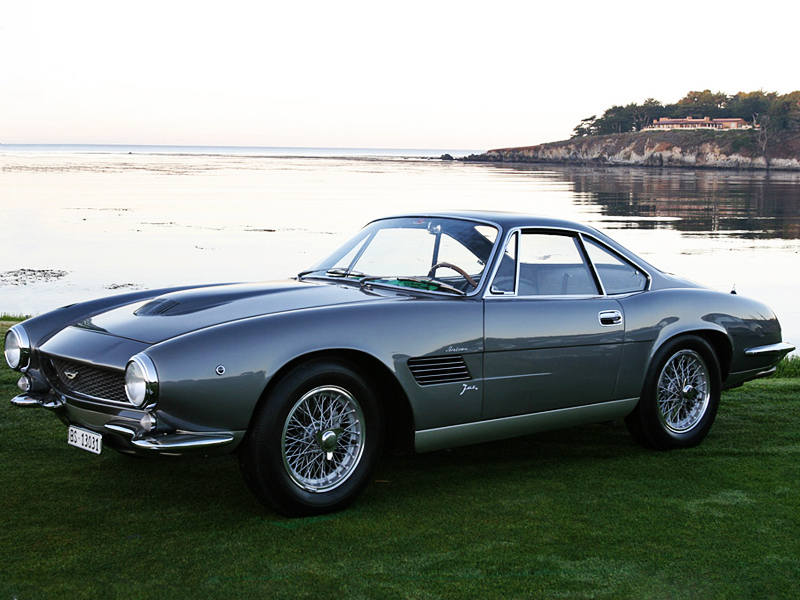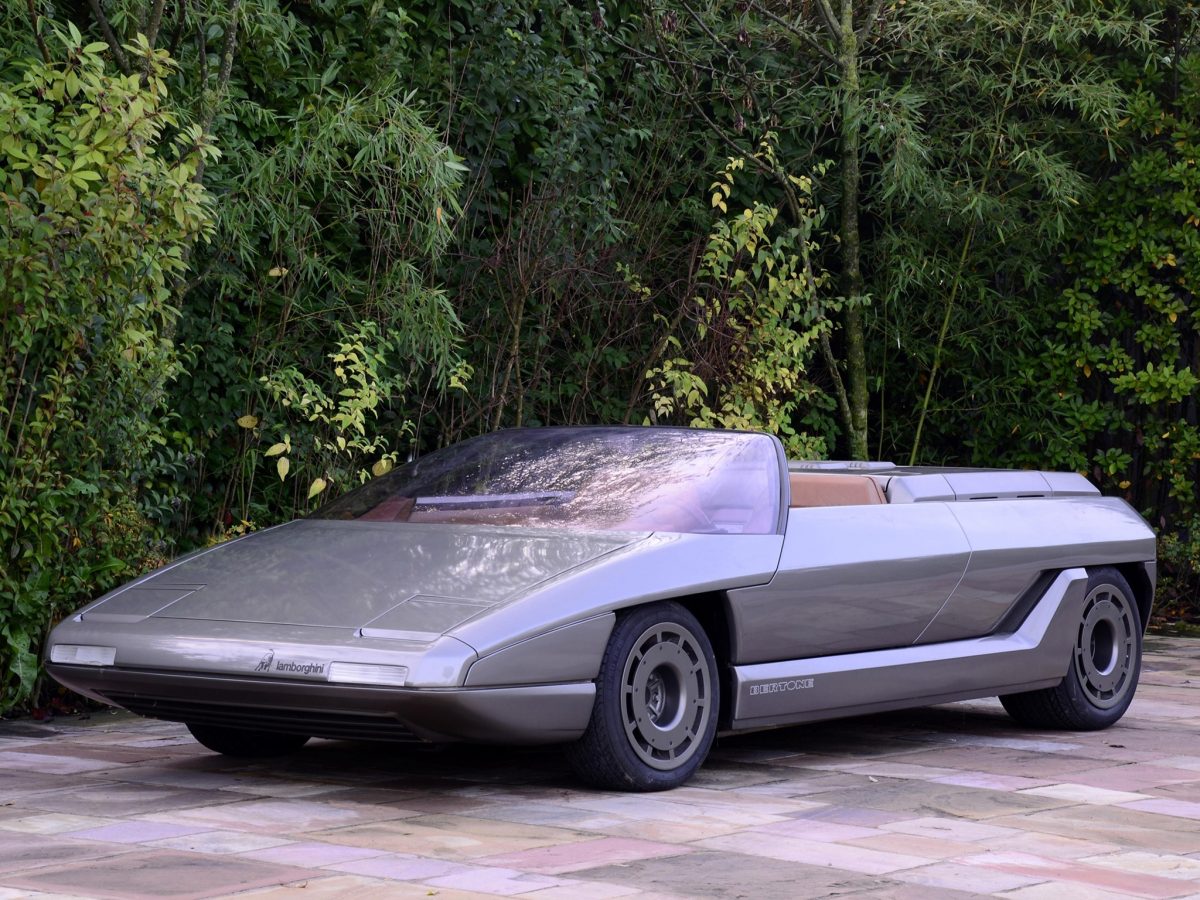
Lamborghini Genesis (Bertone) (1988)
At the end of the last century, the year 2000 was seen as a futuristic future. The beginning of a new era. Automakers of all countries tried to create something unimaginable, unlike others. They presented their fantasies on the topic of how the cars of the 21st century would look like.
The Italian bodywork studio Bertone, from whose pen came the masterpieces ahead of their time, Miura and Countach, of course, could not stand aside. On June 21, 1988, at the Turin Motor Show, they presented a concept called the Genesis. From Greek – “Origin”. And indeed, the name corresponded to the concept.
The design of the sports minivan was developed by a team led by Marc Deschamps, chief designer of the Centro Stile Bertone. Genesis represented the origin of a new class of cars of the future. Full-size five-seater Gran Turismo class minivan.
In terms of dimensions, it turned out to be quite compact. Its length was 4,475 mm, width – 2,000 mm, and height – 1,520 mm with a wheelbase of 2,650 mm. Front and rear overhangs – 1,050 mm and 775 mm, respectively. Front-mounted 16-inch wheels with 225/45 tires, rear – 17-inch wheels, tire size – 285/40
Side sliding doors provided easy access to the rear of the cabin. And the two front lifting doors were mounted on the central pillar and, together with the windshield, opened like a “gull-wing”. Thanks to this decision, there was no need for front pillars, which was a plus for visibility. Glasses at Genesis were photochromatic. The door handles were integrated into dark trims that neatly camouflaged the red B-pillars.
There were two seats in the front, two in the rear and one in the middle. Each seat was equipped with personal speakers, which meant good sound quality for all passengers.
Both front seats were firmly fixed in the cabin. Only their backs were adjustable. The back of the front passenger seat rotated 180 degrees. This made it possible for the front passenger to sit both in the direction of travel and against.
The back of the central seat could be transformed into a table for rear passengers. In addition, the center seat itself could be moved forward and backward, in a range of about 70 cm, like the rear ones. Then the tail section passengers could feel like in an executive sedan. This was facilitated by reclining seatbacks and footrests emerging from under the seats. Or vice versa, it was possible to move the seats forward, increasing the volume of the trunk.
It is worth noting that all these manipulations with the chairs occurred automatically by pressing the buttons.
It is impossible not to say that the Genesis was a full-fledged road car. Inside the concept, longitudinally in front, partly under the front seats, was a 455-horsepower V12 engine from the Countach Quattrovalvole. But, despite this, it was not possible to achieve high speed. Since by that time the owner of Lamborghini was Chrysler. It was decided to put a 3-speed automatic Chrysler Torquу Flite. Instead of the traditional 5-speed manual. In addition, the mass of the car almost reached two tons (1800 kg).
Some sources write Lamborghini Genesis. But is it. Is the minivan from Bertone a full-fledged Lamborghini? You can argue about this for a long time. One way or another, the inscription “Genesis V12 Lamborghini” flaunts on the back of the body, indicating the engine. Since 1988, to this day, Genesis delights people who see it. But it was never planned for a series launch. It was made as a show car.

